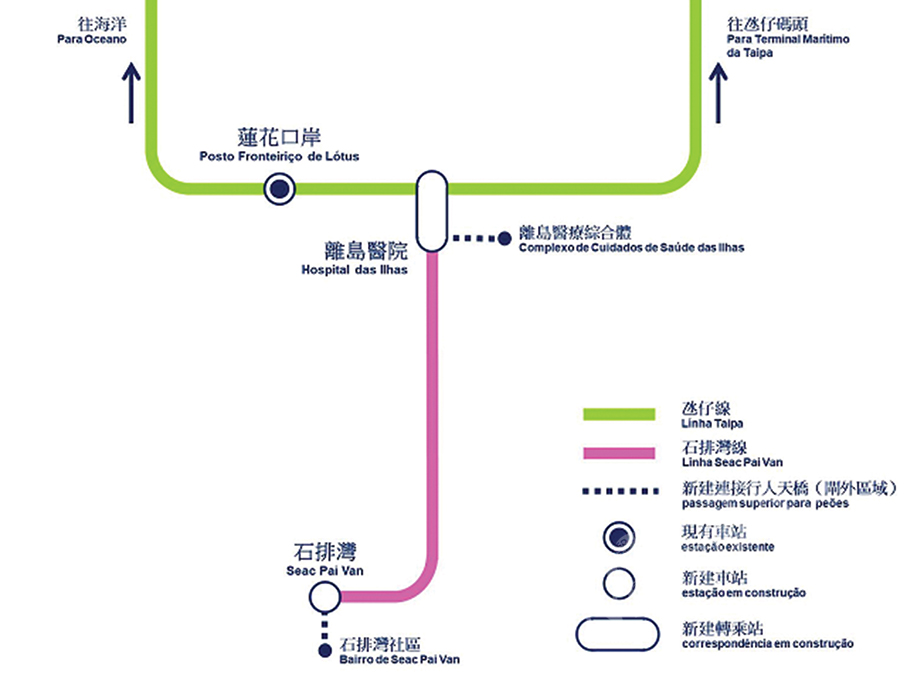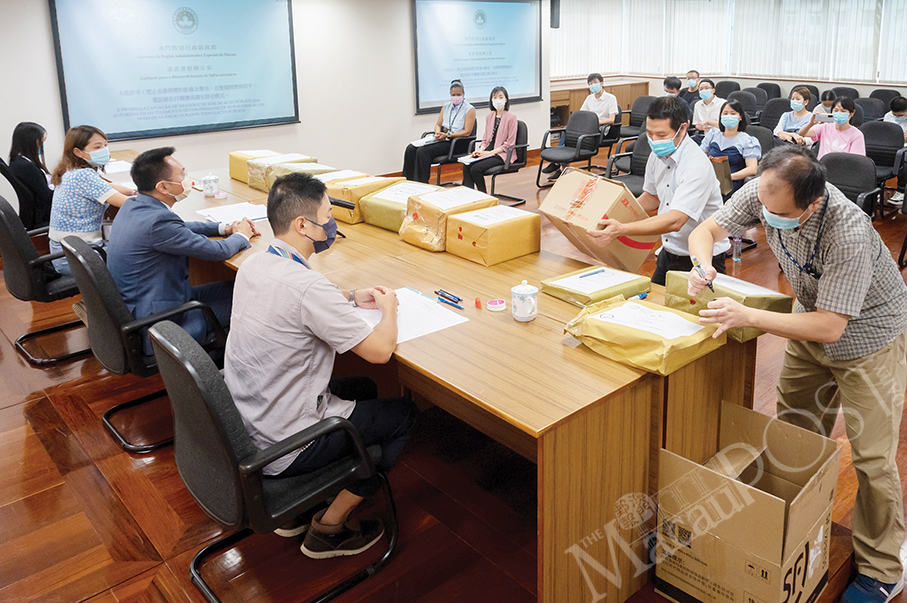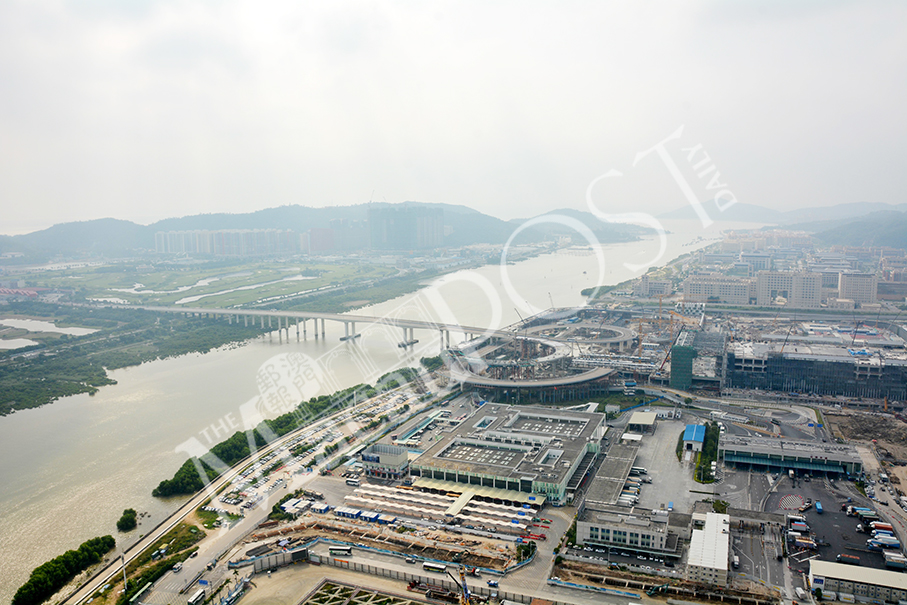The Infrastructure Development Office (GDI) said in a statement yesterday that it now expects the construction of the Seac Pai Van section of the Light Rail Transit (LRT) to get off the ground in the second half of this year.
The LRT Seac Pai Van section project was initially slated to start at the end of last year after the office had invited bids for the project in late July last year, for which 10 construction companies submitted their respective bids, which were unsealed by the office in early September. However, the office announced last month that it had decided to relaunch its public tender for the LRT Seac Pai Van section project, as the quotations and construction periods proposed by the then 10 bidders last year were “obviously lower and shorter than the reasonable levels”.
After the office axed last year’s bids, it invited new quotations for the project early this month, for which 11 construction companies have submitted their bids, which were unsealed by the office yesterday.
Among the 11 bids unsealed yesterday, 10 were accepted, while the office accepted the remaining one conditionally – the company will have to submit some documents that it has failed to include within a specified period of time.
According to yesterday’s statement, the quotations proposed by the 11 bidders this time range from 908 million patacas to 1.008 billion patacas.
This time, the office has set a maximum period of 890 working days for the winning bidders to complete the project.
According to yesterday’s statement, the construction periods proposed by the 11 bidders this time range from 638 to 760 working days.
The names of the bidders were not announced yesterday.
According to a GDI announcement in September last year, the quotations proposed by the then 10 bidders ranged from 896 million patacas to 975 million patacas.
Last year, the office had set a maximum period of 960 working days for the winning bidder to complete the project. According to September’s GDI announcement, the construction periods proposed by the then 10 bidders ranged from 490 to 820 working days.
Last month’s GDI announcement said that after assessing the 10 bids submitted last year, GDI officials had concluded that the proposed quotations and construction periods were “obviously too low and too short”.
Last month’s announcement said that based on previous experience, the office had concluded that if the project’s construction contract had been granted to any of the then 10 bidders, it was likely that it would have resulted in “serious” budget overruns and construction delays. Consequently, last month’s announcement said, the government had decided to cancel last year’s bids “in the public interest”, as the construction periods proposed by the then 10 bidders were “extremely unreasonably [short]”.
Rosário stresses need for relaunching tender
Speaking to reporters after attending a closed-door committee meeting in the Legislative Assembly (AL) yesterday, Secretary for Transport and Public Works Raimundo do Rosário reaffirmed the government’s need to relaunch its public tender for the LRT Seac Pai Van section project as the construction periods proposed by the then bidders last year were too short, because of which, he said, the government believed that none of the then bidders would have been able to complete the project in their respective proposed construction periods.
Rosário said the aim of the relaunch of the public tender was to ensure that the project can finally get off the ground.
Rosário said that the government expects to complete its assessment of the submitted bids this time in one and a half months. He said that the government expects to spend up to four months to complete the required administrative procedures, including the work to decide which company will win the tender, before signing a construction agreement with the winner.
The 1.6-kilometre-long Seac Pai Van section will connect the still under-construction Cotai hospital complex – officially known as Islands Healthcare Complex – and the sprawling Seac Pai Van public housing estate in Coloane.
“Islands” is the official term for Taipa, Coloane and Cotai together.
The Seac Pai Van section will only have two stations – one in Estrada do Istmo near the future Cotai hospital complex, and the other one in Estrada de Seac Pai Van outside the Seac Pai Van public housing estate.
In addition to the two stations – officially known as Islands Hospital station and Seac Pai Van station, a transfer station will be built on the LRT Taipa section for LRT passengers to transfer between the Taipa section and the Seac Pai Van section.
The future Islands Hospital station will be extended and connected to the transfer station on the Taipa section. The Lotus Checkpoint station on the Taipa section is the closest station to the future transfer station.
Meanwhile, when asked by reporters yesterday, Rosário categorically rejected some residents’ suggestions that due to its extremely low passenger numbers the LRT service should be suspended. Rosário was adamant that this was not an option the government was considering.
Owing to the impact of the COVID-19 pandemic on the local economy, the tourism sector in particular, the number of LRT passengers has reportedly fallen to just between 1,000 and 2,000 a day.

Secretary for Transport and Public Works Raimundo do Rosário (right) speaks to reporters in the Legislative Assembly (AL) yesterday. Courtesy: TDM

This map taken from the Infrastructure Development Office (GDI) website yesterday shows the future two-station LRT Seac Pai Van section indicated by the pink line. The green line shows the current Taipa section.

Infrastructure Development Office (GDI) officials unseal the bids submitted by 11 construction companies for the Light Rail Transit (LRT) Seac Pai Van section project, at the office in Zape yesterday. Photo: GCS






